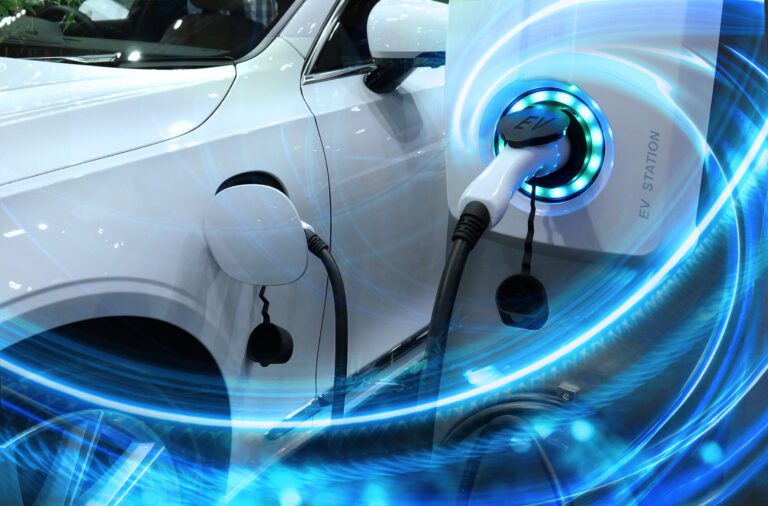And if the euphoria that had seized the announcement of the transition to electric vehicles in Europe is turning into disillusionment? As the 2035 deadline approaches, the goal of ending the sale of internal combustion engines, decreed by the European Union, seems too ambitious. The bar is set too high.
Sales are down, political backtracking, factory closures, delays in battery manufacturers’ projects, insufficient charging infrastructure, exorbitant prices in a context of dwindling purchasing power… So many potholes ahead for the European industry, whose road to full electrification seems much more winding than expected.
The crisis in the sector had been brewing for some time, but the latest figures have confirmed a negative trend. According to the European Automobile Manufacturers Association (ACEA), electric car sales fell in August two and a half times faster than the market. Only 92,627 electric cars were sold, a decline of almost 44% compared to the previous month. Their market share is also significantly down, by a third. Battery Electric Vehicles (BEVs) now account for only 14.4% of the total, whereas they represented one in five sales last year.
These figures could not have come at a worse time. In Belgium, the Audi Brussels plant, which produces the electric Q8 e-tron SUV, is set to close, resulting in the loss of more than 2,900 jobs. According to specialized European media, the German manufacturer Volkswagen, Audi’s parent company, is reviewing its future investments, particularly in the electric segment, and is considering cutting up to 30,000 jobs in Germany. This is unprecedented.
Before VW, the premium brand Mercedes, another champion that makes Germany proud, the economic engine and flagship of the EU, has slowed down its investments in electric vehicles. The group has, among other things, abandoned its project for a platform dedicated to high-end electric models, initially planned for 2028, and revised down its production targets for electric and hybrid vehicles, from 50% in 2025 to 50% by the end of the decade.
The example of the German automotive industry leaders is revealing in many ways of the difficulties faced by European manufacturers, who must invest heavily in new costly technological platforms, in a context of crisis, sluggish consumption, and the removal of substantial tax advantages and bonuses granted in recent years for the purchase of electric cars in many member states. Not to mention the issues related to supply chain disruptions and pressure from Chinese competition, which the Commission is trying to counteract with tariffs.
The electric vehicle battery sector is also facing setbacks. The slowdown in sales has forced some manufacturers to scale back their investments. The latest to do so is the Swedish manufacturer Northvolt, a key supplier to major manufacturers such as Volvo and Volkswagen, which has announced job cuts and the suspension of its expansion plans.
Northvolt, which currently employs 6,500 people, will indeed reduce its workforce by 400 positions at a research site and another 200 in Stockholm. Additionally, the company stated that it is “suspending” the development of its factory in Skelleftea, in northern Sweden.
And the outlook does not seem promising. According to the think tank Transport & Environment, more than half of the lithium-ion battery production planned in Europe by 2030 could be delayed, reduced, or even canceled.
Underperformance is also affecting the charging infrastructure, which is well below initial targets. According to the ACEA, the number of charging stations needs to be multiplied by 8 on average to meet the goals set by the European Commission by 2030.
A report from the EU Court of Auditors supports this view. According to its auditors, the European battery industry is lagging behind its competitors, who could short-circuit Europe’s production capacity before it even reaches full capacity. Less than 10% of the world’s battery production capacity is indeed based in Europe, and most of it is manufactured by non-European companies. China alone holds 76% of global capacities. As a result, the goal of one million chargers by 2025 is, according to them, far from being achieved.
This week, Italy has raised its voice, calling for a rapid review of the ban on the sale of new internal combustion engine cars in the EU.
“With other countries, we will formulate a written document to submit to the Commission. Given the data already available (…), we are now certain that with this timeline, we will not meet the targets set for 2035,” said Italian Minister of Enterprises and Made in Italy, Adolfo Urso, on the sidelines of an informal meeting on the automotive sector organized by the Hungarian presidency of the EU Council at the European Parliament in Brussels.
In his view, the ban is synonymous with a serious crisis for European car manufacturers and is likely to “jeopardize hundreds of thousands of jobs across Europe.”
Italy would not be the only one demanding a review of this decision or at least the conditions necessary to achieve this goal. Germany seems ready to follow this path, according to its Minister of Economy, Robert Habeck, as do Poland, Bulgaria, or Romania, given their positions expressed in the past.
However, the decision is in the hands of the European Commission, which holds the monopoly on legislative initiative in the EU.
While waiting for the path that the von der Leyen II Commission will choose to take, which will face the European Parliament in the coming weeks, manufacturers are showing pragmatism by maintaining their internal combustion engines while developing their electric offerings. Economic realism requires that they do not shy away from any scenario. Especially since the necessary revival of the competitiveness of the European industry – on everyone’s lips in Brussels – could have the direct consequence of slowing down the ecological transition.


